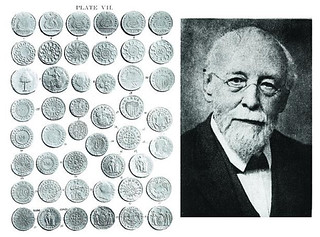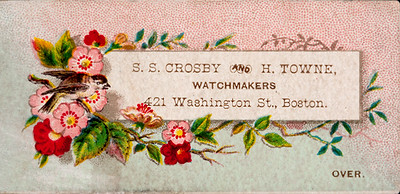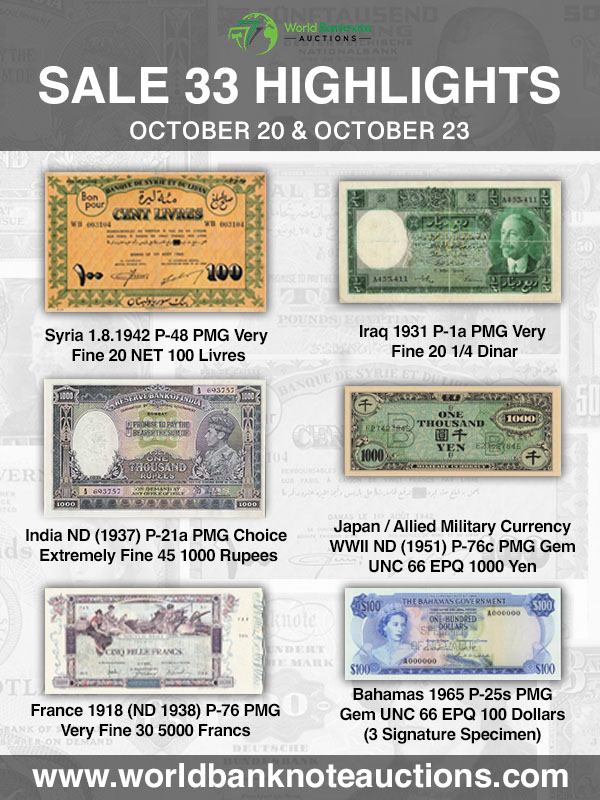
PREV ARTICLE
NEXT ARTICLE
FULL ISSUE
PREV FULL ISSUE
V25 2022 INDEX E-SYLUM ARCHIVE SYLVESTER SAGE CROSBY (1831-1914)American Numismatic Biographies author Pete Smith submitted this article on numismatic researcher and author Sylvester Sage Crosby. Thanks! The pictured newspaper article is from The Boston Globe of June 13, 1907, page 11. -Editor
What was the first coin book illustrated with photos?
Sylvester Sage Crosby (1831-1914)
The name of Sylvester Sage Crosby should be familiar to anyone with enough interest in numismatics to read The E-Sylum. Although parts of his story may be familiar, perhaps other parts are not. Harvard graduate, the Reverend Jaazaniah Crosby (1789-1864) and wife Hulda Robinson Sage (1795-1835) welcomed their sixth child in 1824 and named him Sylvester Sage Crosby after his maternal grandfather, Yale graduate, the Reverend Sylvester Sage (1765-1841). The young child died on April 7, 1825. As often happened back then, they gave the same name to their ninth child, born in Charlestown, New Hampshire, on September 2, 1831. The second Sylvester married twice. He married his first wife, Mary Elizabeth Capelle, on September 1, 1855, and she died on October 26, 1874. Less than a year later he married Mehitable Ackers on September 15, 1875. Neither marriage produced children. He began working as a watchmaker at age 17 in Charlestown, but he moved to Cambridge, Massachusetts, and set up business in Boston. He was a partner in the watch and jewelry business with Horatio Towne at 421 Washington Street in Boston. In addition to numismatics, he enjoyed archeology, astronomy and fungiculture. Crosby contributed an article on the cents of 1793 to the American Journal of Numismatics for their issue of April 1869. Later he compiled AJN articles into The United States Coinage of 1793 Cents and Half Cents published in 1897. This included description of the patterns of 1792. Crosby was one of the founding members of the New England Numismatic and Archeological Society on April 6, 1866. He was the club's first curator. In 1869, the vice president, Charles Chapman, suggested the club form a committee to write a reference on the coins of Colonial America. Crosby was chairman of the committee with other members Charles Chapman, Dudley R. Child, Chas. S. Fellows, James E. Root and T. Edward Bond. The book had a grand title, The Early Coins of America; and the Laws Governing Their Issue. Comprising also Descriptions of the Washington Pieces, the Anglo-American Tokens, Many Pieces of Unknown Origin, of the Seventeenth and Eighteenth Centuries, and the First Patterns of the United States Mint. The ambitious plan was for the book to be published in ten parts and sold by subscription at $1 per part. Each part would be 32 pages, include one plate of photographic illustration and sent out with a paper wrapper. Print run for the book would be 350 copies. That plan failed to materialize as the book progressed. The committee of six provided little support and left the work to Crosby alone. He scoured historical archives for the legislative records establishing coinage and borrowed coins for photography. By the final printing, the list of subscribers had grown to just 160 with 22 organizational subscribers and 138 individuals. That generated revenue of just $1600 and not the anticipated $3500. The first five parts were printed by Charles Chaplin who dropped out with remaining parts printed by T. R. Marvin & Sons, printer for the American Journal of Numismatics. Financial support came from the New England Numismatic and Archaeological Society as publisher in 1873 but by completion in 1875, Crosby was listed as publisher. The book was longer than expected and final parts 11 & 12 were published together to finish the book at 384 pages. Subscriber were asked for an additional $2 to get these final parts. The original print run was 350 copies and many buyers had their sets bound in a variety of bindings. Unbound sets are seen occasionally and the paper wrappers are scarce. The book was republished in 1945, 1965, 1970, 1974 and 1983.
The photos have a very uniform appearance and were not made from actual coins. Plaster casts were made from the coins and the photos taken of those plaster casts. An advantage was that coins could be gathered from various sources and did not need to be in the same place at the same time to allow for photography. The obverse and reverse of a coin could be shown on the same plate. Reviews of the book were generally positive and the book remains a classic work to this day. A review was published by Edward Maris in the October issue of the American Journal of Numismatics. It was complimentary of some aspects of the book but critical for noted omissions. It was also critical that some additional collections were not included among the sources. Maris made up a Woodburytype plate of 48 state coppers missing from the book and offered it to the original subscribers for 50 cents. Some had it bound with their copies. This additional plate was included in the 1983 Quarterman reprint of Early Coins of America. Crosby died at home in Cambridge on August 18, 1914. He is buried at the Monroe Cemetery in Lexington, Massachusetts. Crosby was given an honorary membership in the American Numismatic Society and the American Numismatic Association. The ANS had names of numismatic scholars cut in stone for the frieze of the building. Crosby was the only American honored in this way. In 1970 he was inducted into the ANA Numismatic Hall of Fame.
To read the earlier E-Sylum articles, see:
Wayne Homren, Editor The Numismatic Bibliomania Society is a non-profit organization promoting numismatic literature. See our web site at coinbooks.org. To submit items for publication in The E-Sylum, write to the Editor at this address: whomren@gmail.com To subscribe go to: https://my.binhost.com/lists/listinfo/esylum All Rights Reserved. NBS Home Page Contact the NBS webmaster 
|



